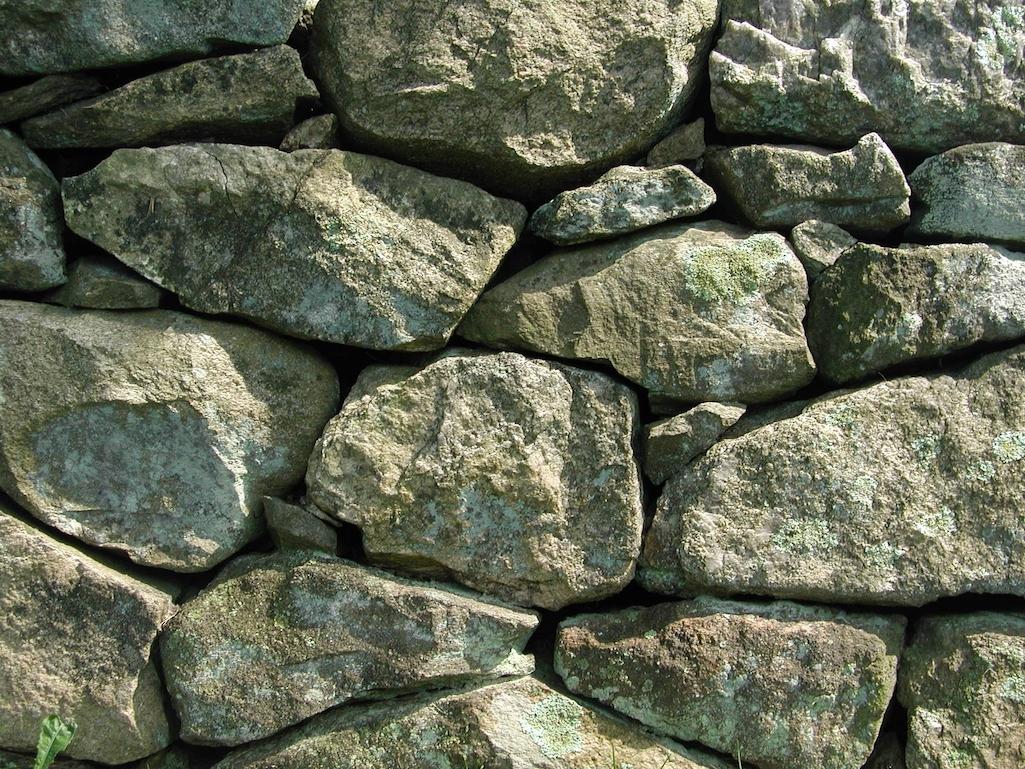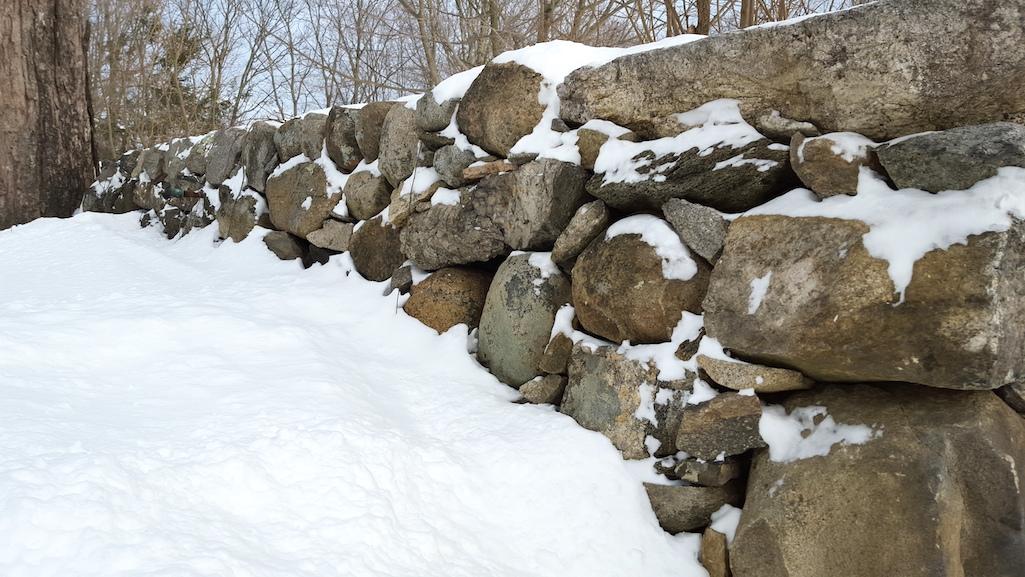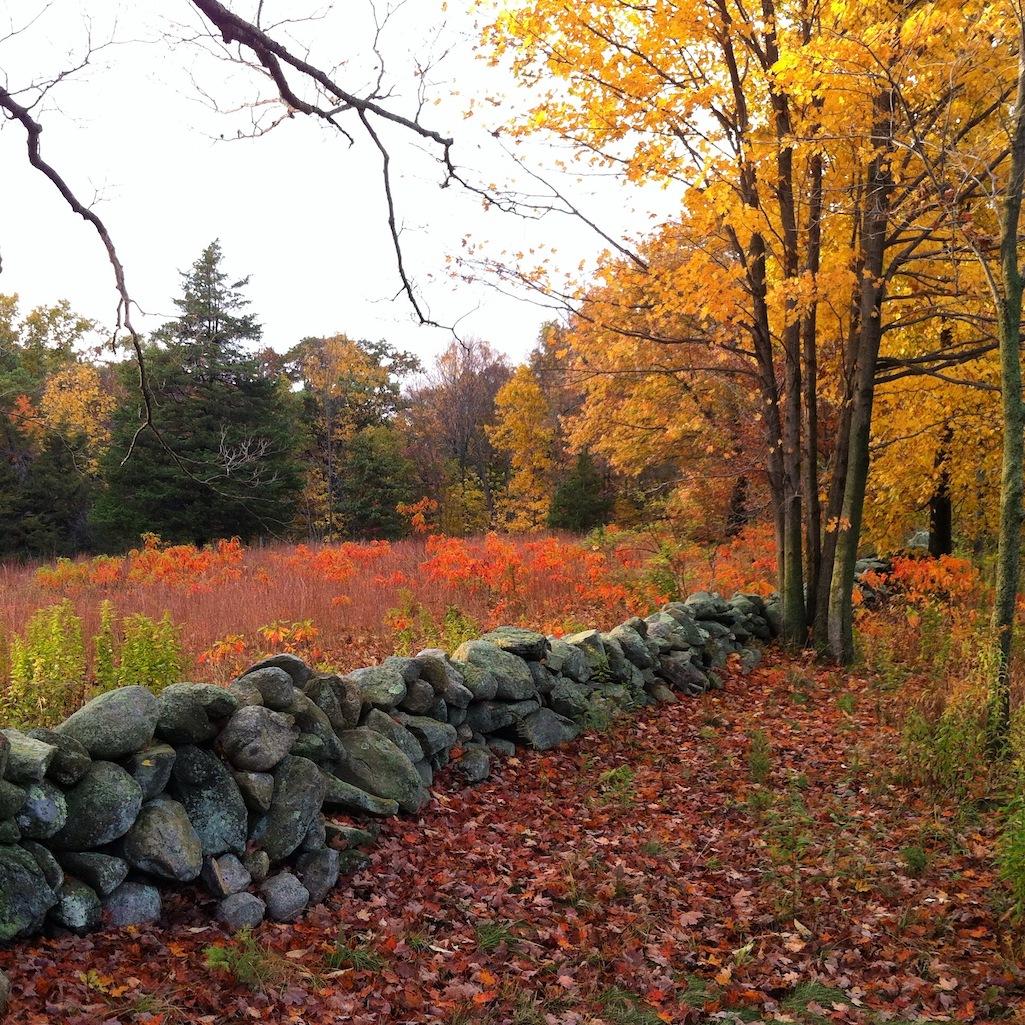
There are rock walls, and then there are rock walls at Weir Farm National Historical Park/NPS file
So opens Robert Frost's seminal poem, Mending Wall. Was Frost endorsing fences or rock walls? Not really, for he believed they created figurative walls between neighbors, despite what the neighbor in his poem maintained.
Bringing a stone grasped firmly by the top
In each hand, like an old-stone savage armed.
He moves in darkness as it seems to me,
Not of woods only and the shade of trees.
He will not go behind his father's saying,
And he likes having thought of it so well
He says again, ‘Good fences make good neighbors.’

Rock wall in winter at Weir Farm National Historic Park/NPS file
Rock walls run like veins across the landscapes of New England. Hardy New Englanders raised them by hands more than a century ago across their farms. But did you know there wasn't one approach to building stone walls?
At Weir Farm National Historic Park in Connecticut, Ranger Tom will take you on a virtual stroll through the fields of the farm to examine the three different types of stone walls on the property and learn about their rich history. The stone walls not only provide an opportunity to explore New England's geologic and cultural past, but they have also served as a source of inspiration to the artists who have lived at and visited Weir Farm for more than 135 years.
Here, courtesy of the park staff, is a short primer to get you ready for the event on February 5 at 11 a.m. Eastern on Weir Farm's Facebook page:
Thrown Wall
The most basic wall is the thrown wall. Lacking a formal structure or foundation, these walls do not take any experience to build.
Laid Wall
At the turn of the 20th century, an influx of settlers from Europe brought experienced quarrymen and masons to the area with new solutions for the farmers of New England. Soon, more formal walls of quarried or “dressed” stone appeared in the region.
Rubble-filled Wall
Although a vast improvement, laid walls are not built to allow for the movement of soil beneath their foundations, movement that results from the freezing and thawing of water in the ground. Consequently, a third type of stone wall appeared, the rubble-filled wall, that combines the favorable aspects of both previous designs.

Rock wall in fall at Weir Farm National Historic Park/NPS file

 Support Essential Coverage of Essential Places
Support Essential Coverage of Essential Places







Comments
Great photos and always good to read Robert Frost -- really nice way to start a day. Nothing says New England like these stone walls or the coast of Maine. Thanks for putting this on your site.
PS...Weir Farm was just redesignated a National Historical Park.
Weir Farm Is Now a National Historical Park - Weir Farm National Historic Site (U.S. National Park Service) (nps.gov)
Good catch, Mather. You'd think we would have remembered that from our story last week...;-) We fixed it.